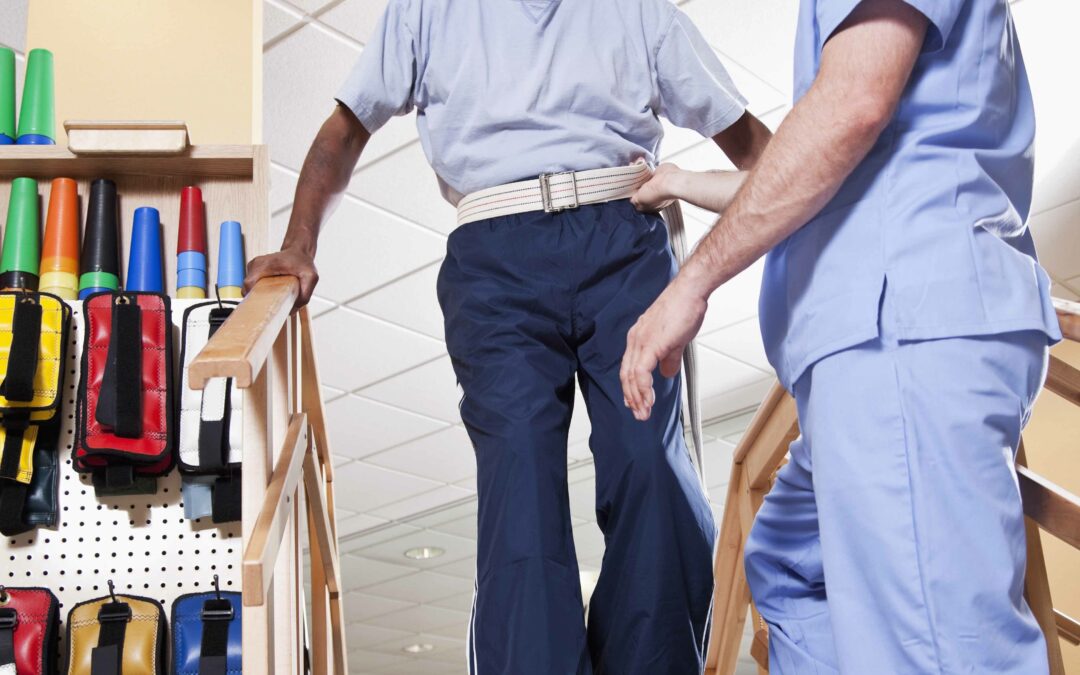If what gets you up in the morning has been compromised by illness or injury, you may want to visit our occupational therapist.
Occupational therapists spend a fair amount of time explaining what it is that they do exactly and why it’s not the same as what a physical therapist does. First, they don’t help people find employment, but the work may make it possible for someone to be employed.
It’s somewhat understandable that there is confusion about these two professions and why some think the two are one in the same. But there are significant differences and also some areas where the two actually overlap.
Physical and occupational therapists train extensively in anatomy and the musculoskeletal system; as well as the variety of injuries, diseases and birth defects that can rob a person of even small routine movements. Both are knowledgeable about what it takes to recover from these losses, but while the physical therapist tends to be more focused on treating the source of the injury and evaluating movement dysfunctions, occupational therapists address the challenges presented by those injuries and teach their patients how to become more independent in spite of the limitation.
Occupational therapists help people re-think or re-learn the mechanics of daily activities, either for the workplace or in the home. The very definition of occupation changes at times during our lives. Not only is the word “occupation” used for someone’s regular profession, it also describes any activity in which a person is engaged.
For young people and retired workers, that may not mean a job or profession. What that occupation is, depends on the patient themselves. I want to establish what is important to the patient I’m helping. This starts early in the process, often when the patient is still hospitalized. When is it safe for them to go home alone? Are they strong enough? Do they have a support system? What skills do we need to work on to give them the independence to manage their own lives?
This can be simple activities such as getting dressed, working in the kitchen or garden, bathing and cleaning. For example, if you’re recovering from a hip replacement, a physical therapist would work with you to regain strength and mobility in the leg allowing you to walk into the kitchen. The occupational therapist would then teach you various ways to easily prepare meals in the kitchen. For a grandmother who wants to play with her toddler grandchildren, we might work on her balance.
Occupational therapists are more likely to make on-site assessments of both the home and work environment and recommend suitable adaptations to allow for a better quality of life. The occupational therapist teaches patients how to modify their physical environment as well as the use of assistive technologies to aid independence. Assistive technology is an umbrella term that includes adaptive and rehabilitation devices for people with disabilities, including the process of selecting, locating and their use.
Recently one of our occupational therapists had the opportunity to help a woman who was severely injured in a car accident. She fractured several ribs and her ankle. After the car accident, she had difficulty breathing so a trachial tube was inserted. While it helped with breathing, it also impacted her ability to speak. In a few short weeks, she has regained her voice and her mobility to the point of bathing and dressing herself, with the aid of a wheelchair and walker.
Another young woman who, suffered a stroke following the birth of her child, has relearned how to carry her infant, through the use of a weight-specific, infant-sized bundle we created to help her practice the movements necessary to be the mother she wants to be.
Advances in occupational science continue to show us just how much meaningful activities – occupations – impact our health and well-being.
— Our occupational therapists are located in the St. Mary’s Joint and Spine and Surgical Institute. Call us at 816-655-5700 for more information and to schedule an appointment.


